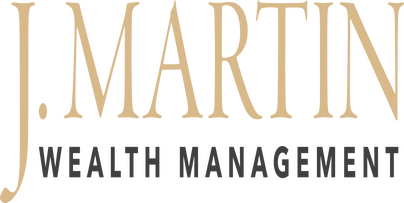You may assume that you must rollover your 401(k) when leaving your employer into another retirement savings plan. However, depending on the 401(k) plan document and if a rollover is appropriate for your situation, it may be optional.

Leaving Your Employer? You Have Options For Your 401(k)
Jeff Martin, CRPC®, Financial Advisor
You may assume that you must rollover your 401(k) when leaving your employer into another retirement savings plan. However, depending on the 401(k) plan document and if a rollover is appropriate for your situation, it may be optional. A rollover is when you direct your 401(k) transfer to a new retirement plan or an IRA when you leave your employer. This transfer process can be done electronically or by check from custodian to custodian, or from one Investment Company to another, without you receiving the check for your 401(k)'s value.
Here are the options available for your 401(k), and you may initiate more than one option depending on your situation:
Option #1- Leave the 401(k) in the former employer's plan- If permitted by the 401(k) plan documents, a former employee can leave their 401(k) in the employer's plan when they terminate their employment. Here's what to check:
· Can you leave your 401(k) plan?
· Is there paperwork to fill out to initiate a transfer?
· Can you rebalance the investment strategies if you leave your 401(k)?
Why would an employee choose this option?
· The new employer may have a waiting period before enrollment, and the employee intends to roll over their 401(k) to the new employer's 401(k) plan.
· The fees may cost less
· The old 401(k) plan has investments more aligned with the employee's investing strategy.
Option #2- 401(k) portability- Rolling your old 401(k) into your new employer's 401(k) plan may be possible if the new plan accepts rollovers. Be sure to evaluate your new employer's 401(k) plan before making your decision by examining the following:
· Compare both 401(k) plans fund options, fees, management expenses, and possibly commissions. Remember that costs may decrease the return over time.
· The waiting period to roll over your old 401(k) to your new 401(k)
· The cost to roll over your 401(k) to another 401(k) plan.
· Ownership- In a qualified retirement plan, you are the participant and not the owner, and the plan administrator determines your distribution options in moving your 401(k) assets to another 401(k).
Option #3- Rollover your 401(k) assets into an IRA- You have a few options with a direct rollover:
401(k) into an IRA- You can roll over your 401(k) into your existing IRA or open a new IRA and initiate transfer paperwork with the help of your former retirement plan administrator, HR department, and financial professional.
401(k) Roth into a Roth IRA- You can roll your 401(k) Roth into an existing Roth IRA or open a new one. No taxes are due when the money moves, and any recent earnings accumulate tax deferred. Earnings are eligible for tax-free withdrawal once the Roth IRA has been open for at least five years and you are at least 59 1/2.
401(k) into a Roth IRA- If your 401(k) plan permits rollovers into a Roth IRA, you can initiate the rollover into your Roth IRA or open a new one. Be aware that you will need to pay taxes at the time of the rollover transfer, so you must consult your tax professional before converting your 401(k) to a Roth IRA.
Earnings on the Roth IRA that accumulate after the rollover will be eligible for tax-free withdrawal when the Roth IRA has been open for at least five years and you are at least 59½.
What to consider before rolling over your 401(k) to an IRA or Roth IRA:
· The cost to roll over your 401(k) to an IRA plan.
· The IRA fund options, fees, management expenses, and commissions.
Option #4- Rollover your 401(k) to an annuity- An annuity is a contract with an insurance company to provide an income stream during retirement for a specified period or the remainder of the annuitant's life. Annuities help address the risk of outliving their retirement savings and are purchased with monthly premiums or a lump-sum payment, such as when you roll over your 401(k).
The three types of annuities widely used in financial planning are fixed, indexed, and variable annuities. Like any financial product, each type of annuity has costs, pros, and cons. Annuities are not without risk, and due diligence should take precedence before purchasing one for your retirement portfolio.
Option #4- Cash out the 401(k)- Cashing out a 401(k) becomes a taxable event since the contributions and accumulation are taxable, regardless of the employee's age. Here's what you need to consider:
· If you are younger than 59 1/2, you will pay a 10% penalty.
· Taxes will be immediately due on the 401(k)'s contributions and accumulation.
· The IRS allows penalty-free withdrawals from retirement accounts after age 59 1/2 and requires minimum withdrawals (RMDs) after age 73 and 75 starting in 2033.
· Some exceptions exist for 401ks and other qualified plans, so you must consult your plan administrator.
Now that you understand your options for your 401(k), you have the decision to make; either keep your 401(k) where it is, roll it over into another 401(k), IRA, Roth IRA, or an Annuity, or cash it out.
